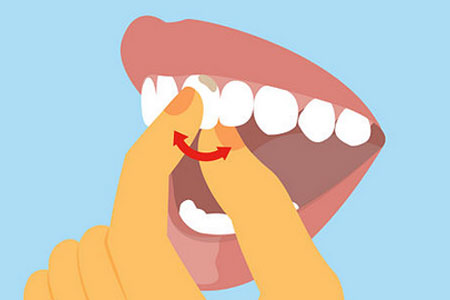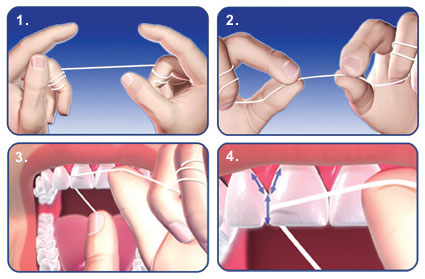Mobility
 Tooth Mobility represents the non-physiological horizontal movement of the teeth and in severe cases the vertical
movement. Usually teeth have a very small degree of mobility that allows them to adapt to the forces that arise
during mastication. In the absence of adequate treatment, dental mobility will increase and in time will lead to
tooth loss. Tooth mobility is never a good sign, but you don't have to lose your teeth. At the first hint of a
loose tooth, see a dentist immediately. After a thorough examination, your dentist can determine the cause and
severity, and he will present you with a treatment plan to save your teeth.
Tooth Mobility represents the non-physiological horizontal movement of the teeth and in severe cases the vertical
movement. Usually teeth have a very small degree of mobility that allows them to adapt to the forces that arise
during mastication. In the absence of adequate treatment, dental mobility will increase and in time will lead to
tooth loss. Tooth mobility is never a good sign, but you don't have to lose your teeth. At the first hint of a
loose tooth, see a dentist immediately. After a thorough examination, your dentist can determine the cause and
severity, and he will present you with a treatment plan to save your teeth.
 Tissues around loose teeth are red and swollen,
Tissues around loose teeth are red and swollen,
Bleeding gums,
Pain and discomfort while chewing,
Shaky teeth significant especially while eating,
Improper bite
 BITE ADJUSTMENT
BITE ADJUSTMENT
The way in which the chewing surfaces of the teeth come in contact influences the health of the teeth, the
periodontal tissues, the muscles of mastication, and the temporomandibular joint (TMJ). Pathological dental
contacts affect all these structures leading to tooth mobility, bleeding gums, gum recession, etc. The bite
(i.e. how the teeth meet together) is adjusted by minor reshaping of the biting surfaces of the teeth so that
they receive less force.
Dental Cleaning
A mobile tooth is not properly sustained in the bone or in the gums. Teeth cleaning will remove all that plaque,
allowing the gums to adhere to the tooth and the bone tissue to heal. It is extremely important to decrease tooth
mobility before vertical tooth mobility begins. If the mobility is only horizontal we can treat in time .
Schedule your appointment with dentist to treat mobility in early stages.
Splinting
Splinting is done to stabilize the loosened tooth. It involves joining the loose teeth to the adjacent firmer
ones so that the biting force is distributed to multiple teeth rather than individual loosened teeth.
Night guards
Teeth that are loosened by grinding or clenching habit can be firmed by wearing a night guard. The night guard
fits over teeth and prevents grinding.
Tooth Removal
Teeth which are loose and move in all directions may have to be extracted.
 Regular dental visits for early identification and treatment.
Regular dental visits for early identification and treatment.
Brushing and Flossing daily.
Rinsing mouth after every meal.
